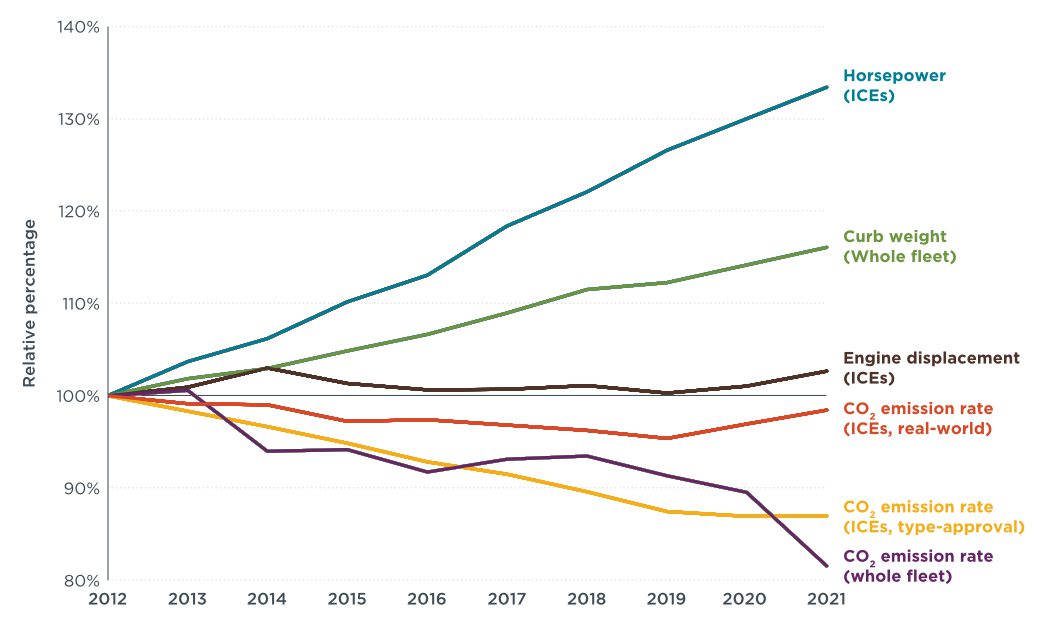Evaluation of real-world fuel consumption of light-duty vehicles in China: A 2021 update
Report
Trends of new passenger cars in China: Air pollutant and CO2 emissions and technologies, 2012–2021
点击此处查看中文内容
Achieving China’s dual ambitions of peak carbon dioxide (CO2) emissions by 2030 and carbon neutrality by 2060 will require a strong focus on the transport sector and that transport-related air pollutant and CO2 emissions be monitored and regulated in a coordinated fashion going forward. For the latter, fundamental data about the current baseline and historical trends is needed. This report supports future policies in China by analyzing vehicle air pollutant emissions, CO2 emissions, and key technologies driving reductions in emissions in passenger cars from 2012 to 2021. The authors collaborated with the Vehicle Emissions Control Center (VECC) in collecting, compiling, cleaning, and validating some of the data used, and the report also assesses how previous policies impacted emissions trends. (To emphasize, the results and findings do not represent any official positions from regulatory bodies in China.)
Several highlights emerge, including:
- Consumer preference has trended toward larger, heavier, and more functionally powerful vehicle segments. The volume of new SUVs increased by fivefold in the past decade, to 9.4 million new vehicles registered in 2021. The share of SUVs among all classes of passenger cars grew from 12% in 2012 to over 45% in 2021.
- The certified CO2 emission rate of the entire new passenger car fleet, normalized to the New European Driving Cycle (NEDC), decreased by 18% from 2012 to 2021, to 129 g/km, and there was an average annual reduction of 2.2%. The most rapid single-year reduction, 9%, was from 2020 to 2021 as a result of the dramatic increase in the share of new energy vehicles. When solely looking at internal combustion engine vehicles, the reduction in CO2 emission intensity is less remarkable.
- The adoption of CO2 emission control technologies increased to varying extents. The portion of internal combustion engine passenger cars equipped with a turbocharger or a supercharger grew from 11% in 2012 to 62% in 2021. Gasoline direct injection (GDI) has become the dominant fuel supply technology of gasoline cars, increasing from 8% in 2012 to 60% in 2021.
- There has been significant progress in controlling air pollutant emissions in the past decade and it is due to the constantly evolving regulatory standards and the penetration of advanced emission control technologies. The laboratory emission intensities of nitrogen oxides (NOx) declined by over 30% and particulate matter declined by over 70% in the past decade. The average on-road NOx emission level of passenger cars certified to the China 6 standard is currently in compliance with both China 6a and 6b regulatory requirements.

Figure. Vehicle performance and CO2 emission rates normalized to 2012 levels (2012 = 100%)
